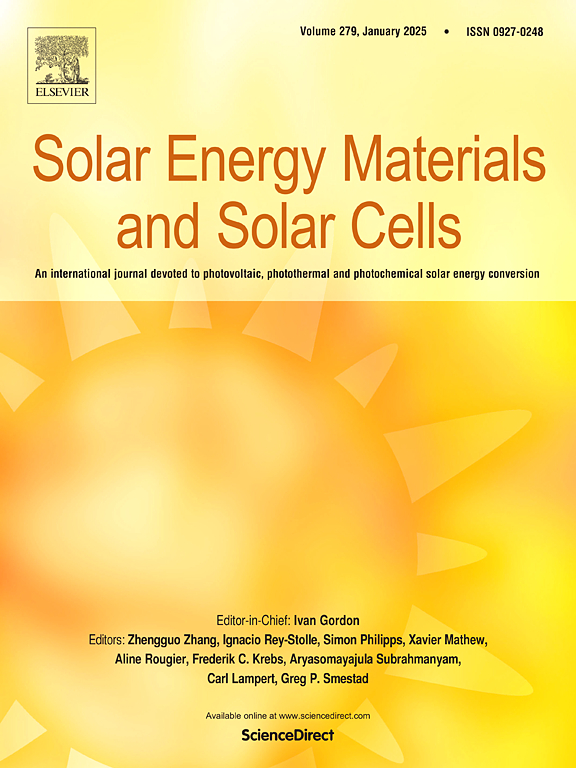碳基CsPbI2Br钙钛矿太阳能电池表面平面化实现了低维钙钛矿流平化合物
IF 6.3
2区 材料科学
Q2 ENERGY & FUELS
引用次数: 0
摘要
碳基、空穴传输无层全无机CsPbI2Br钙钛矿太阳能电池(无html - C-PSCs)由于其成本效益和卓越的稳定性,在光伏应用中具有重要的前景。然而,在碳电极/钙钛矿界面上大量的欠配位Pb2+和卤素空位严重影响了它们的性能。本文引入4-氟苄胺三氟乙酸酯(p-F-PMATFA)与钙钛矿层表面直接反应,生成一种低维化合物,有效地平衡了碳/钙钛矿界面。这种策略提高了钙钛矿薄膜的质量,使薄膜形貌均匀致密,降低了陷阱密度,减轻了电荷复合和离子迁移。此外,高平面界面的形成和界面缺陷的钝化有助于在碳/钙钛矿连接处有效地提取空穴。因此,冠军器件显示出13.41%的高功率转换效率(PCE)。值得注意的是,未封装处理的设备在85°C的氮气气氛中储存500小时后,其初始PCE保持在95%以上。我们的工作为开发具有成本效益,高效和稳定的无html的C- pscs提供了一个简单而高效的策略,为未来的光伏技术提供了一个有前途的途径。本文章由计算机程序翻译,如有差异,请以英文原文为准。
Surface planarization enabled low-dimensional perovskite-leveling compound for carbon-based CsPbI2Br perovskite solar cells
The carbon-based, hole-transporting layer-free all-inorganic CsPbI2Br perovskite solar cells (HTL-free C-PSCs) offer significant promise for photovoltaic applications due to their cost-effectiveness and remarkable stability. However, the substantial undercoordinated Pb2+ and halogen vacancies at the carbon electrode/perovskite interface seriously hamper their performance. Herein, 4-fluorobenzylamine trifluoroacetate (p-F-PMATFA) was introduced to reacted directly with the perovskite layer's surface, yielding a low-dimensional compound that effectively levels the carbon/perovskite interface. This strategy improves the quality of the perovskite film, resulting in uniform and dense film topography, diminished trap density, and mitigated charge recombination and ion migration. Furthermore, the formation of highly planar interfaces and the passivation of interfacial defects facilitates efficient hole extraction at the carbon/perovskite junction. As a result, the champion device exhibits a high power conversion efficiency (PCE) of 13.41 %. Notably, the unencapsulated treated device maintains over 95 % of its initial PCE after being stored in a nitrogen atmosphere at 85 °C for 500 h. Our work present a straightforward yet highly effective strategy for developing cost-effective, efficient, and stable HTL-free C-PSCs, offering a promising avenue for future photovoltaic technologies.
求助全文
通过发布文献求助,成功后即可免费获取论文全文。
去求助
来源期刊

Solar Energy Materials and Solar Cells
工程技术-材料科学:综合
CiteScore
12.60
自引率
11.60%
发文量
513
审稿时长
47 days
期刊介绍:
Solar Energy Materials & Solar Cells is intended as a vehicle for the dissemination of research results on materials science and technology related to photovoltaic, photothermal and photoelectrochemical solar energy conversion. Materials science is taken in the broadest possible sense and encompasses physics, chemistry, optics, materials fabrication and analysis for all types of materials.
 求助内容:
求助内容: 应助结果提醒方式:
应助结果提醒方式:


